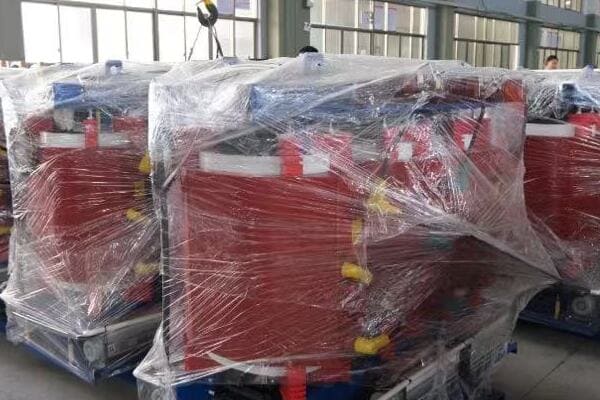What Is a Electric Transformer: From Power Plants to Your Doorstep?
Have you ever wondered how electricity from power plants safely reaches your home? The answer lies in a crucial device: the electric transformer. Without it, our modern electrical grid wouldn’t exist.
An electric transformer is a device that changes the voltage of electricity. It works by using electromagnetic induction to transfer energy between two or more circuits. Transformers are essential for efficient power transmission and safe electricity use in our homes and businesses.

As someone who has worked in the power industry for years, I’ve seen firsthand how transformers shape our electrical systems. Let’s dive deeper into the world of electric transformers and explore their fascinating journey from power plants to your doorstep.
The Basics of Electric Transformers: Your Guide to Power Conversion?
Imagine trying to drink from a fire hose. That’s what using electricity straight from a power plant would be like. Transformers are the devices that make electricity usable for us.
Electric transformers convert power by changing voltage levels while maintaining the same frequency. They use electromagnetic induction to step voltage up for efficient long-distance transmission or step it down for safe local use, all while preserving the overall power.
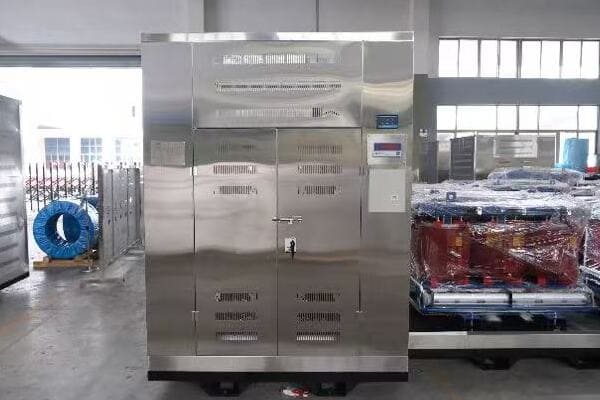
Let me explain how this power conversion process works, drawing from my experience in the field.
The Core Components of a Transformer
A transformer consists of three main parts:
- Primary Coil: This is where the input voltage is applied.
- Secondary Coil: This is where the transformed voltage is output.
- Iron Core: This helps to concentrate and direct the magnetic field between the coils.
The Principle of Electromagnetic Induction
The key to a transformer’s operation is electromagnetic induction. Here’s how it works in a transformer:
- When an alternating current flows through the primary coil, it creates a changing magnetic field.
- This changing magnetic field is concentrated and directed by the iron core.
- The changing magnetic field then induces an alternating voltage in the secondary coil.
The Transformer Equation
The relationship between the number of turns in each coil and the voltages is given by the transformer equation:
(Vs / Vp) = (Ns / Np)
Where:
- Vs = Secondary Voltage
- Vp = Primary Voltage
- Ns = Number of turns in the Secondary Coil
- Np = Number of turns in the Primary Coil
This means that if we want to step up the voltage, we need more turns in the secondary coil than in the primary. Conversely, to step down the voltage, we need fewer turns in the secondary coil.
Types of Power Conversion
Transformers can convert power in two main ways:
| Type | Voltage Change | Current Change | Application |
|---|---|---|---|
| Step-Up | Increases | Decreases | Power plants to transmission lines |
| Step-Down | Decreases | Increases | Substations to homes |
In my work designing power systems, I’ve seen how crucial this power conversion is. It’s this ability that allows us to have a flexible and efficient electrical grid, capable of delivering power from distant plants to our homes safely and efficiently.
From Megawatts to Milliwatts: Transformers in Power Generation and Transmission?
Have you ever wondered how the massive amount of power generated at a plant becomes the safe, usable electricity in your home? The secret lies in a series of transformers along the way.
Transformers play a crucial role in power generation and transmission. At power plants, step-up transformers increase voltage for efficient long-distance transmission. Along the transmission lines, various transformers maintain and adjust voltage levels. This process ensures power reaches its destination with minimal losses.
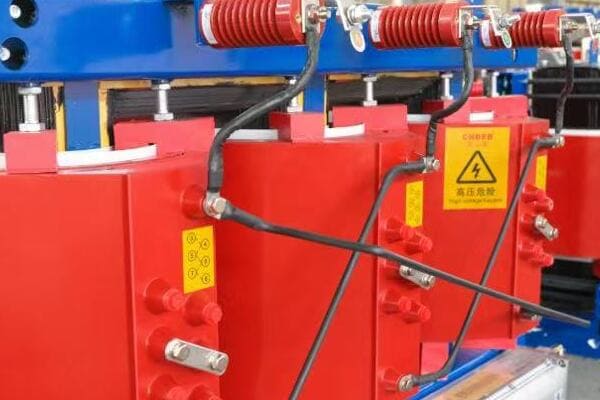
Let me take you on a journey of how electricity travels from power plants to your city, based on my years of experience in the field.
Step 1: Power Generation and Step-Up
The journey begins at power plants:
- Generation: Electricity is typically generated at 11,000 to 25,000 volts.
- Step-Up Transformer: Increases voltage to 155,000 to 765,000 volts for transmission.
- Purpose: Higher voltage reduces power losses over long distances.
Step 2: High-Voltage Transmission
Once the voltage is stepped up, the power enters the transmission phase:
- Transmission Lines: Carry electricity over long distances.
- Substations: Use transformers to adjust voltage between different transmission lines.
- HVDC Converters: Special transformers for High Voltage Direct Current transmission.
Step 3: Sub-Transmission
Before reaching local distribution, power goes through a sub-transmission stage:
- Sub-Transmission Lines: Typically 33,000 to 155,000 volts.
- Substations: Step down voltage for distribution networks.
Transformer Types in Power Generation and Transmission
Let’s look at the types of transformers used in this process:
| Stage | Transformer Type | Voltage Change | Purpose |
|---|---|---|---|
| Generation | Step-Up | 25kV to 765kV | Enable long-distance transmission |
| Transmission | Various | 155kV to 765kV | Efficient power transfer |
| Sub-Transmission | Step-Down | 765kV to 33kV | Prepare for distribution |
In my work across these stages, I’ve encountered various challenges:
- Efficiency: We’re constantly working to reduce losses at each stage.
- Reliability: Transformers must operate continuously for years.
- Environmental Concerns: We’re developing eco-friendly designs and materials.
- Smart Grid Integration: Modern transformers often include monitoring and communication capabilities.
Understanding this journey helps us appreciate the complex system that brings electricity from power plants to our cities. Transformers are the unsung heroes at every stage, ensuring that the power we generate can be efficiently transmitted across vast distances.
The Neighborhood Power Hub: Distribution Transformers and Local Grids?
Have you ever noticed those cylindrical objects on utility poles or those green boxes in your neighborhood? These are distribution transformers, the final step in bringing power to your home.
Distribution transformers are crucial in local power grids. They step down the voltage from distribution lines (typically 4,000 to 33,000 volts) to levels safe for use in homes and businesses (120/240 volts). These transformers ensure efficient and safe power delivery to end-users.
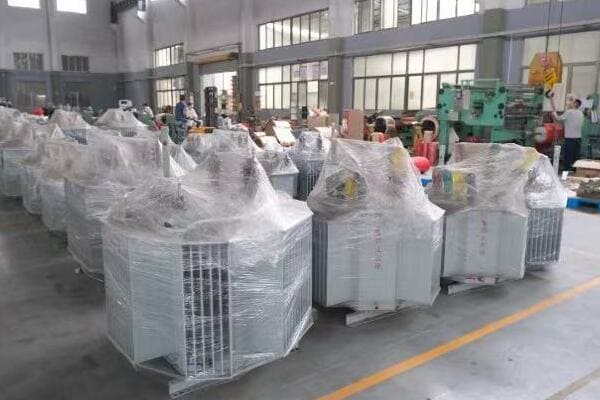
As someone who has worked extensively with local power grids, let me explain how these neighborhood power hubs work.
The Role of Distribution Transformers
Distribution transformers serve several key functions:
- Voltage Step-Down: They reduce voltage to levels safe for household use.
- Isolation: They provide electrical isolation between the distribution system and consumers.
- Load Management: They help balance the load across the local grid.
Types of Distribution Transformers
There are two main types of distribution transformers:
-
Pole-Mounted Transformers:
- Mounted on utility poles
- Typically serve a few houses
- Power capacity: 5 to 100 kVA
-
Pad-Mounted Transformers:
- Installed on ground-level concrete pads
- Often used in underground distribution systems
- Power capacity: 75 to 5000 kVA
The Local Grid Structure
The local grid is structured to efficiently deliver power to homes and businesses:
- Primary Distribution Lines: Carry 4,000 to 33,000 volts
- Distribution Transformers: Step down voltage to 120/240 volts
- Secondary Distribution Lines: Carry power from transformers to buildings
- Service Drop: The final connection to individual buildings
Challenges in Local Power Distribution
In my work with local grids, I’ve encountered several challenges:
- Load Balancing: Ensuring even distribution of power across transformers
- Maintenance: Regular inspection and maintenance of numerous transformers
- Upgrades: Replacing old transformers to meet increasing power demands
- Smart Grid Integration: Incorporating modern monitoring and control systems
Comparison: Pole-Mounted vs. Pad-Mounted Transformers
| Aspect | Pole-Mounted | Pad-Mounted |
|---|---|---|
| Location | On utility poles | Ground level |
| Capacity | 5-100 kVA | 75-5000 kVA |
| Cost | Lower initial cost | Higher initial cost |
| Maintenance | Easier access | More secure |
| Aesthetics | More visible | Less visible |
Understanding the role of distribution transformers in local grids is crucial for appreciating how electricity reaches our homes safely and efficiently. These devices are the final step in a long journey from power plants to our doorsteps, ensuring that we have the right voltage for our daily needs.
Transformers at Home: How They Power Your Everyday Devices?
Have you ever stopped to think about how many transformers you encounter in a day? From the moment you wake up to when you go to sleep, transformers are working behind the scenes to power your life.
Transformers in homes and everyday devices convert standard outlet voltage to the specific voltages needed by various appliances and electronics. They ensure safe and efficient operation of everything from your smartphone charger to your refrigerator, playing a crucial role in our daily lives.
Let me take you on a tour of the transformers in our daily lives, based on my years of experience in the power industry.
Common Household Transformers
Many of our home appliances and devices use transformers:
- Smartphone and Laptop Chargers: Convert 120V AC to low-voltage DC
- Doorbell Transformers: Reduce 120V to 16V for doorbell operation
- HVAC Systems: Power control circuits in heating and cooling systems
- LED Lighting: Convert high voltage AC to low voltage DC for LED operation
Types of Transformers in Home Devices
There are several types of transformers commonly found in homes:
- Step-Down Transformers: Reduce voltage for most household electronics
- Isolation Transformers: Provide safety in sensitive electronics
- Autotransformers: Used in some appliances for small voltage adjustments
Transformer Applications in Daily Life
Let’s look at how transformers impact a typical day:
| Time | Activity | Transformer Role |
|---|---|---|
| 7 AM | Make coffee | Steps down voltage for coffee maker |
| 9 AM | Work on laptop | Converts AC to DC in charger |
| 1 PM | Microwave lunch | Provides high voltage for magnetron |
| 7 PM | Watch TV | Supplies various voltages for components |
| 10 PM | Charge phone | Steps down voltage and converts to DC |
Safety and Efficiency in Home Transformers
In my work with home electrical systems, I’ve learned the importance of transformer safety and efficiency:
- Overload Protection: Many home transformers have built-in protection against overloads
- Energy Efficiency: Modern transformers are designed to minimize energy waste
- Heat Management: Proper design ensures transformers don’t overheat during operation
- Electrical Isolation: Many transformers provide isolation for added safety
The Future of Home Transformers
Looking ahead, I see several trends in home transformer technology:
- Smart Transformers: Integration with home automation systems
- Higher Efficiency: Continued improvements in energy conservation
- Compact Designs: Smaller, more powerful transformers for electronics
- Renewable Energy Integration: Transformers designed to work with solar panels and home batteries
Understanding the role of transformers in our homes gives us a new appreciation for these often-overlooked devices. From the tiny transformers in our phone chargers to the larger ones in our appliances, these devices are working tirelessly to power our modern lifestyles safely and efficiently.
The Invisible Guardian: How Transformers Ensure Safe and Efficient Power Supply?
Have you ever wondered how our electrical grid stays safe and efficient despite constantly changing demands? Transformers play a crucial role in this delicate balancing act, acting as invisible guardians of our power supply.
Transformers ensure safe and efficient power supply by regulating voltage levels, isolating circuits, and optimizing power flow. They protect against overloads and short circuits, reduce transmission losses, and enable the integration of diverse power sources. This role is crucial for maintaining a reliable and sustainable electrical grid.
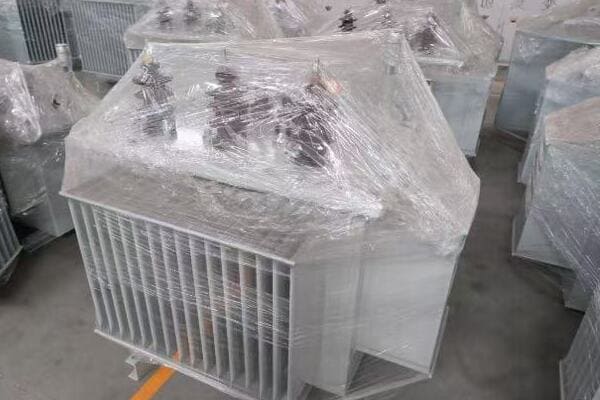
Drawing from my years in the power industry, let me explain how transformers act as guardians of our power supply.
Safety First: How Transformers Protect Us
Transformers play a crucial role in electrical safety:
- Voltage Control: They step down high transmission voltages to safe levels for consumer use.
- Isolation: Transformers can electrically isolate circuits, preventing fault propagation.
- Grounding: They often provide a ground reference, crucial for safety systems.
- Fault Detection: Many transformers are equipped with protective devices to detect and respond to faults.
Efficiency Matters: Transformers and Power Loss Reduction
Transformers are key to efficient power transmission:
- High Voltage Transmission: Step-up transformers enable high-voltage, low-current transmission, reducing I²R losses.
- Load Matching: Transformers help match power source characteristics to load requirements, optimizing efficiency.
- Power Factor Correction: Some transformers can help improve power factor, enhancing system efficiency.
Reliability: Keeping the Lights On
Transformers contribute to grid reliability in several ways:
- Overload Capacity: Many transformers can handle short-term overloads, enhancing system flexibility.
- Voltage Regulation: Tap-changing transformers help maintain stable voltage levels.
- Fault Isolation: They can help contain faults, preventing widespread outages.
Smart Grid Integration: Transformers Get an Upgrade
Modern transformers are becoming smarter:
- Monitoring: Built-in sensors track key parameters like temperature and oil condition.
- Communication: Some transformers can now communicate with grid control systems.
- Adaptability: Smart transformers can adjust their operation based on grid conditions.
Transformer Impact on System Performance
Let’s quantify the impact of transformers:
| Aspect | Without Transformers | With Transformers |
|---|---|---|
| Transmission Losses | High | Reduced by ~70% |
| Voltage Levels | Limited | Multiple levels possible |
| Circuit Isolation | Difficult | Easily achieved |
| Fault Containment | Challenging | Enhanced |
| Smart Grid Integration | Limited | Enabled |
In my work optimizing power systems, I’ve seen firsthand the importance of transformers in ensuring safe and efficient power supply:
- Efficiency Gains: Even small improvements in transformer efficiency can lead to significant energy savings across the grid.
- Safety Enhancements: Modern transformer designs have dramatically improved electrical safety.
- Reliability Improvements: Advanced transformer monitoring has helped prevent many potential outages.
- Flexibility: Transformers enable the integration of diverse power sources, crucial for renewable energy adoption.
Understanding the role of transformers as invisible guardians of our power supply is crucial for anyone involved in energy systems. These devices are not just passive components; they’re active players in ensuring our electrical grid is safe, efficient, and reliable. As we move towards a more complex and sustainable energy future, the role of transformers in maintaining grid stability and efficiency will only become more critical.
Conclusion
Electric transformers are the unsung heroes of our modern power systems, playing a crucial role in the journey of electricity from power plants to our homes. They are fundamental to the safe and efficient delivery of electricity, enabling the conversion of voltage levels to suit different stages of power transmission and distribution.
Throughout this article, we’ve explored the various aspects of electric transformers:
- We began with the basics of power conversion, understanding how transformers use electromagnetic induction to change voltage levels.
- We then followed the journey of electricity from megawatts at power plants to milliwatts in our devices, seeing how transformers facilitate efficient long-distance transmission.
- We examined the role of distribution transformers in our neighborhoods, bringing power safely to our doorsteps.
- We discovered the ubiquity of transformers in our homes, powering our everyday devices.
- Finally, we understood how transformers act as invisible guardians, ensuring the safety and efficiency of our entire power supply system.
As we look to the future, transformers will continue to evolve, adapting to new challenges such as the integration of renewable energy sources and the development of smart grids. They will play a vital role in creating a more sustainable and resilient energy infrastructure.
Understanding the importance of transformers gives us a deeper appreciation for the complex systems that power our modern world. It also highlights the ongoing need for innovation in this field to meet the growing demands of our increasingly electrified society.
As we continue to push the boundaries of energy technology, transformers will remain at the heart of our power systems, silently enabling the electrical conveniences we often take for granted. Their continued development and optimization will be crucial in shaping a more efficient, reliable, and sustainable energy future for all.
Free CHBEB Transformer Catalog Download
Get the full range of CHBEB transformers in one catalog.
Includes oil-immersed, dry-type, pad-mounted, and custom solutions.
Quick Message
Request A free quote
We'd like to work with you
- +86 15558785111
- [email protected]
- +86 15558785111
What We Do
CHINA BEI ER BIAN (CHBEB) GROUP, with 218 million in registered capital, originated from Beijing Beierbian Transformer Group. Headquartered in Beijing for R&D, it operates major production bases in Nanjing and Yueqing, producing high-quality products.
Latest Product
address
BeiJing
No 3,RongJing East Road,BeiJing Economic Technological Development Area,BeiJing,China
JiangSu
No 7️Xiangfeng Road,Jiangning,NanJing,JiangSu,China
WenZhou
No.211, Wei 16 Road, Industrial Zone, Yueqing, Wenzhou, Zhejiang, China.
XiangYang Industrial Zone ,YueQing,WenZhou,ZheJiang,China
contact us
- [email protected]
- +86 13057780111
- +86 13057780111
- +86 15558785111
Copyright © Bei Er Bian Group

